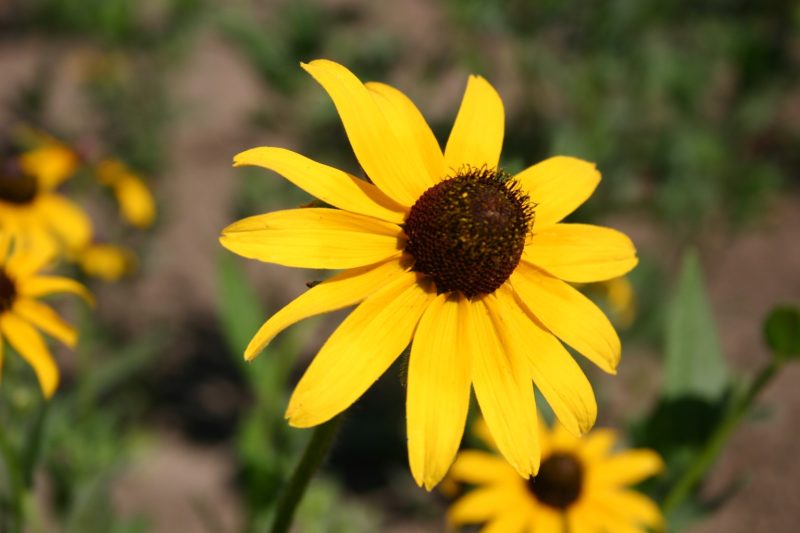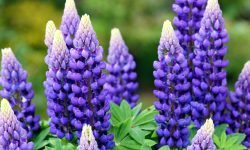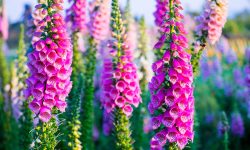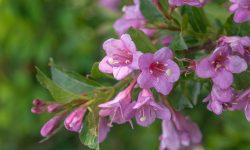Black Eyed Susans, scientifically known as Rudbeckia hirta, are one of the most iconic wildflowers native to North America. Their sunny golden-yellow petals surrounding a striking dark brown or black center make them a standout in gardens, meadows, and wildflower landscapes. Apart from their beauty, many gardeners appreciate them for being hardy, drought-tolerant, and long-blooming. But for those living in areas with heavy wildlife activity, one question often arises: are Black Eyed Susans deer resistant?
The answer is reassuring for wildlife-conscious gardeners. Black Eyed Susans are considered moderately to highly deer resistant, making them a reliable choice for gardens where deer browsing is a concern. The rough and hairy texture of their leaves and stems is unappealing to deer, which usually prefer soft, tender foliage. Their strong, somewhat earthy scent may also discourage browsing, as deer often rely on smell to determine what is palatable.
However, it is important to understand that “deer resistant” does not mean “deer proof.” Under normal conditions, deer will avoid Black Eyed Susans, but during harsh winters or droughts when food sources are scarce, deer may still sample almost any plant, including those they usually leave untouched. That being said, compared to many other garden perennials, Black Eyed Susans consistently perform well in deer-prone regions, offering both resilience and beauty.
Why Deer Rarely Feed on Black Eyed Susans

The physical characteristics of Black Eyed Susans play a major role in their deer resistance. Their leaves have a coarse, slightly bristly texture, which is unpleasant to deer when chewed. The stems are also stiff and covered in tiny hairs, making the overall plant less palatable. Unlike tender greens such as hostas or daylilies, which deer devour eagerly, Black Eyed Susans simply don’t provide the soft, juicy foliage deer seek.
Their growth habit also influences deer behavior. Black Eyed Susans often grow in dense clumps or large drifts, making it harder for deer to browse individual leaves without trampling the plant. Many gardeners have observed that even when deer occasionally pass through their yards, they often skip these bright yellow flowers entirely, focusing instead on more attractive plants nearby.
In addition, some wildlife specialists suggest that the mild but distinctive scent of Rudbeckia species might act as a deterrent. While not as aromatic as herbs like lavender or mint, the leaves and stems have a slightly bitter taste and earthy smell that deer seem to dislike. This makes them ideal for planting along garden borders as a natural deterrent, subtly discouraging deer from venturing further into your flower beds.
How Black Eyed Susans Benefit Deer-Prone Gardens
Incorporating Black Eyed Susans into your garden design does more than just add color; it creates a functional barrier against browsing animals. Because of their deer-resistant nature, they can be planted strategically along borders, around vegetable patches, or near other more vulnerable plants to reduce the likelihood of deer damage.
These flowers are also incredibly versatile. They thrive in full sun and can tolerate a range of soil types, including poor or sandy soils, making them easy to establish in both formal and wildflower-style gardens. Their long blooming period, stretching from midsummer into early fall, ensures continuous color while other plants may struggle with deer damage.
Beyond deer resistance, Black Eyed Susans attract beneficial pollinators such as bees, butterflies, and even hummingbirds. This makes them an excellent choice for eco-friendly gardening, providing food sources for pollinators while remaining mostly ignored by larger herbivores. For gardeners balancing wildlife conservation with the need to protect their flowers, this makes them an ideal choice.
Growing Conditions That Enhance Deer Resistance
Healthy, vigorous plants are naturally more resistant to wildlife damage, and Black Eyed Susans are no exception. They grow best in full sunlight, receiving at least six hours of direct sun daily. In well-drained soil, they develop strong, deep root systems that help them withstand both drought and occasional browsing.
Regular maintenance plays a role in keeping them unappealing to deer. Deadheading spent blooms encourages fresh growth and keeps the plant looking tidy, while cutting back in late fall prevents weak or damaged foliage from attracting animals searching for food. Mulching with aromatic materials like cedar or pine needles can add an extra layer of protection, as strong scents help mask the smell of flowers.
Overcrowding should be avoided, as dense plantings can sometimes trap moisture and lead to weaker stems, which might become slightly more attractive to wildlife. Well-spaced clumps not only look better but also remain tougher and healthier, maintaining their natural deer resistance.
Companion Plants to Maximize Deer Resistance
For gardeners seeking to create an entire landscape that is less attractive to deer, pairing Black Eyed Susans with other deer-resistant plants is highly effective. Flowers such as echinacea, yarrow, lavender, salvia, and Russian sage thrive under similar conditions and share the same resistance qualities. When planted together, these perennials create a visually stunning yet wildlife-resilient garden bed.
The combination of textures, scents, and growth habits in a mixed planting can confuse and discourage deer. By surrounding more vulnerable plants, such as roses or lilies, with a protective ring of Black Eyed Susans and similar perennials, you create a natural barrier. This approach not only reduces the need for chemical repellents but also enhances biodiversity and provides more resources for pollinators.
What to Do If Deer Still Browse on Black Eyed Susans
While rare, there are occasional reports of deer nibbling on Black Eyed Susans, especially in areas where food is extremely scarce. In such cases, adding additional deterrents can help protect your plants. Natural repellents, such as sprays made from garlic, hot pepper, or even homemade soap solutions, can be applied directly to the foliage without harming pollinators or other wildlife.
Another strategy involves planting strongly scented herbs nearby. Rosemary, thyme, oregano, and catmint are particularly effective companions, as their aromatic oils mask the smell of flowers and deter browsing animals. For severe cases, temporary physical barriers such as lightweight garden netting or low fencing can protect plants during critical blooming periods.
The key is consistency. Reapplying repellents after rainfall and maintaining a healthy garden environment will reduce the likelihood of repeated damage. Over time, deer often learn to avoid areas with unpleasant-tasting or strong-smelling plants, making future browsing less likely.
Long-Term Benefits of Choosing Black Eyed Susans
In the long term, choosing Black Eyed Susans for your garden provides more than just protection against deer. These perennials are low-maintenance, self-seeding, and capable of naturalizing in a wide range of environments. Once established, they return year after year with minimal care, providing consistent color without the need for constant replanting or expensive deer deterrents.
Their adaptability also makes them ideal for wildlife-friendly landscaping. While they discourage deer, they attract pollinators and provide seeds for birds such as goldfinches in late summer and fall. This dual benefit allows you to support biodiversity while minimizing damage from larger herbivores.
For gardeners seeking a hardy, resilient, and visually stunning perennial, Black Eyed Susans remain one of the best choices. Their combination of beauty, ease of care, and natural deer resistance makes them a top pick for both beginner and experienced gardeners in deer-prone regions.
FAQs About Black Eyed Susans and Deer Resistance
Are Black Eyed Susans Completely Deer Proof?
No, Black Eyed Susans are not completely deer proof, but they are highly deer resistant. Their rough, hairy leaves and slightly bitter taste make them unappealing to most deer. However, in times of food scarcity, deer might nibble on them occasionally, though significant damage is rare.
Why Do Deer Avoid Black Eyed Susans?
Deer avoid Black Eyed Susans mainly because of their coarse texture and unpleasant taste. The hairy stems and leaves feel rough in a deer’s mouth, while the plant’s earthy scent also discourages browsing. Compared to softer plants, Black Eyed Susans are a less attractive food source.
Can Planting Black Eyed Susans Help Protect Other Plants from Deer?
Yes, planting Black Eyed Susans around more vulnerable plants can help deter deer. Their unappealing texture and strong presence in borders can act as a natural barrier. Combining them with other deer-resistant plants like coneflowers and lavender increases overall protection.
What Should I Do If Deer Eat My Black Eyed Susans?
If deer begin eating your Black Eyed Susans, you can enhance protection by using natural repellents such as garlic or hot pepper sprays. Surrounding them with aromatic herbs or installing lightweight fencing can also discourage deer from returning.
Are Black Eyed Susans Safe for Wildlife Other Than Deer?
Yes, Black Eyed Susans are very wildlife-friendly. While deer usually ignore them, they attract pollinators like bees and butterflies. In late summer and fall, their seed heads provide food for birds such as goldfinches, making them a great addition to a balanced ecosystem.
Final Thoughts on Black Eyed Susans and Deer Resistance
So, are Black Eyed Susans deer resistant? What you should know is that these golden blooms are among the most reliable deer-resistant perennials available. Their rough, hairy texture and strong, slightly bitter taste make them an unappealing choice for browsing animals, even in areas where deer populations are high.
By planting them strategically, maintaining healthy growth, and pairing them with other deer-resistant plants, you can enjoy a vibrant, long-lasting garden with minimal damage from wildlife. Whether used as a border plant, mass planting, or naturalized wildflower patch, Black Eyed Susans remain a gardener’s ally in creating a landscape that thrives despite the presence of deer.






